#grow your own
Text
You can actually grow mint in the ground. It takes a bit of a trick, but you can definitely do it.
But first, a personal lesson on why people tell you not to plant mint in the ground (and yes, I knew better, but life happens and I didn't actually intentionally plant this):

This is my apple mint patch, which started by accidently dropping some minty debris and thinking, what's the worst that could happen? This. This is what can happen.
As you can see, it has engulfed potatoes, rhubarb, strawberries, and raspberries. It has received no care. It has out competed the invasive species that was there (bindweed), and replaced it. It's about 4 feet tall in the center, 5 feet wide, and 7 feet long. I really should do something about it this year.
And here's my other mint patch which is lest than 10 feet away, started at the same time, looking a little rough because I pulled some out to give a friend the other day (well, and it's shaded, and that corner of the yard is pretty weedy- but still! It gets the idea across!)

Take a closer look at the soil between the pots:
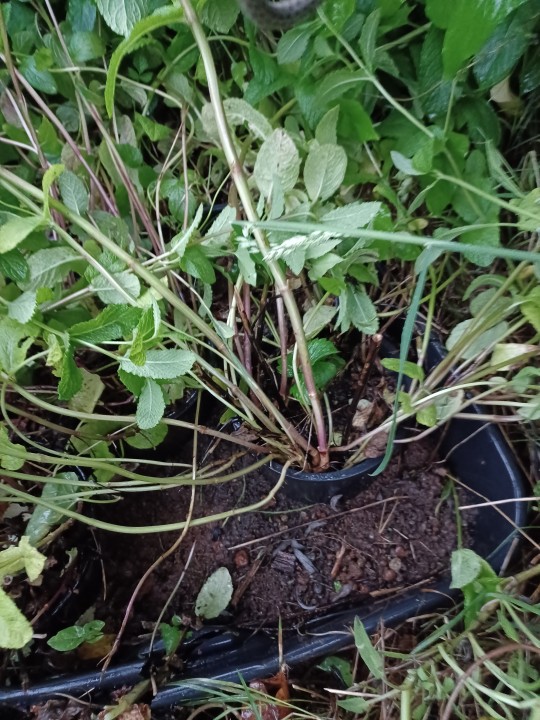
Notice something? Something like the mint not escaping? Yeah, there's bindweed that's gotten in, but ignore that for now*.
Mint.
In the ground.
Contained.
I also know someone who planted theirs in a chimney flue bricks, and it too, has not escaped- even after 5 years.
Why is this important? Well, because mint likes it moist and pots dry out quickly (which means that if i had to keep an eye on it, it would have died 4 years ago).
But if you half bury the pot, the roots (but not the runners!) go down and out and can use the moisture in the soil. I actually lifted these pots up a while ago to check, and they had sent roots down but not runners- and it has been multiple years.
Meaning I haven't had to water this mint. Not even during the 100+ weather days, and we have a summer dry period where we don't get any rain for months.
Now, truly, I was a bit concerned and not trusting of my own idea when I started this, so let me draw a picture of what this system actually is, for folks like me who think it's too good to be true and want some extra insurance:
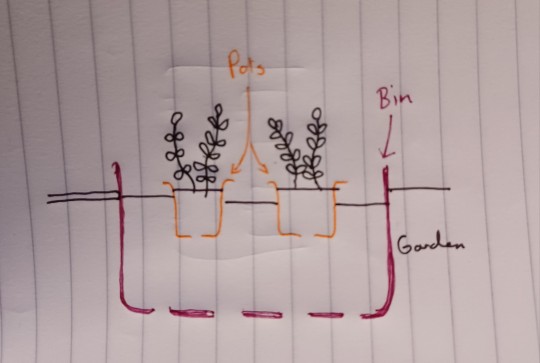
So, as you can see, I didn't put the pot straight into the ground- I actually mostly buried a bin (that had holes in the bottom for drainage), and planted mint pots into that. I have not seen any mint escaping from the pots, but that's there, just in case.
*bindweed/perennial morning glory is awful. If you see it starting in your garden, remove it without hesitancy or mercy. Get every little bit of root. It's harder to get rid of than English ivy or Himalayan blackberry.
#adhd gardening#for folks who don't know mint is the glitter of the gardening world#gardenblr#gardening#my plants#grow your own#mint#did i make this whole post because someone told me not to plant mint in the ground even if it was in a pot? yes. yes i did#I'm probably going to redo this whole post in a couple weeks after I've cleaned up this area#because yikes
3K notes
·
View notes
Text
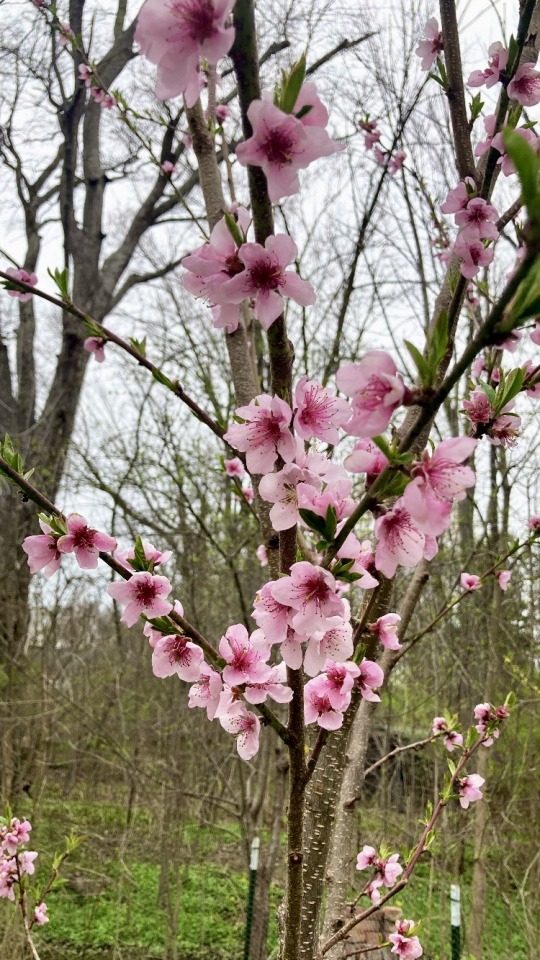

Sorry folks, it’s just that time of year where I obsess over the peach trees. When you’re this beautiful who could really resist?
#gardeners on tumblr#neohio#grow your own#suburban farming#suburban homestead#peach#peach blossoms#mine
34 notes
·
View notes
Text
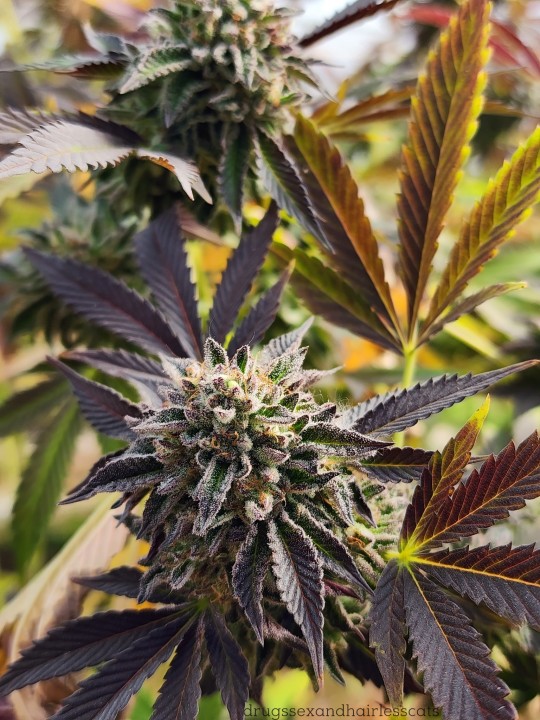



Croptober is upon us🍂
#mine#bakedlilbae#420#weed#astr0zombies#thc#cannabis#mary jane#cannamom#cannafam#girls who get stoned#girls who grow#girls that smoke#girls that love weed#girls that blaze#grow your own#stoner gals#stoner mom#stoner babe#ganjagirls#ganja#ganja babe#trichomes#highsociety#weedporn#weedwitch#mother nature#purple is my favorite color#purple weed#croptober
552 notes
·
View notes
Text
First decent harvest this year: purple sprouting broccoli 🥦

13 notes
·
View notes
Text
[Video description: me discovering and trying surprise salad leaves in my greenhouse]
If you'd like to see more videos of me pottering about, check out the Rumade YouTube channel
13 notes
·
View notes
Text

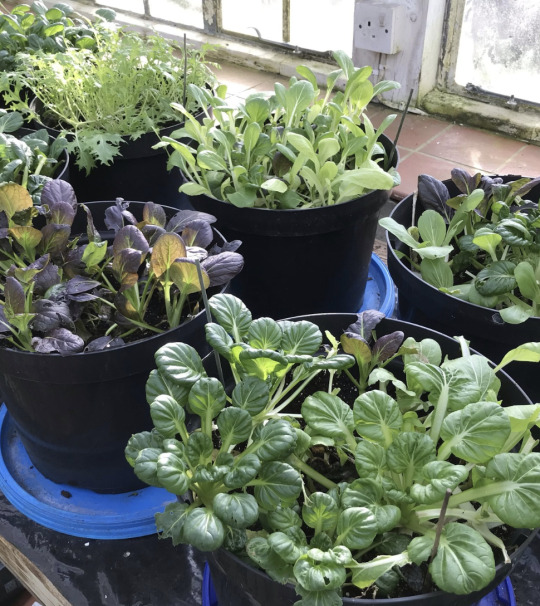

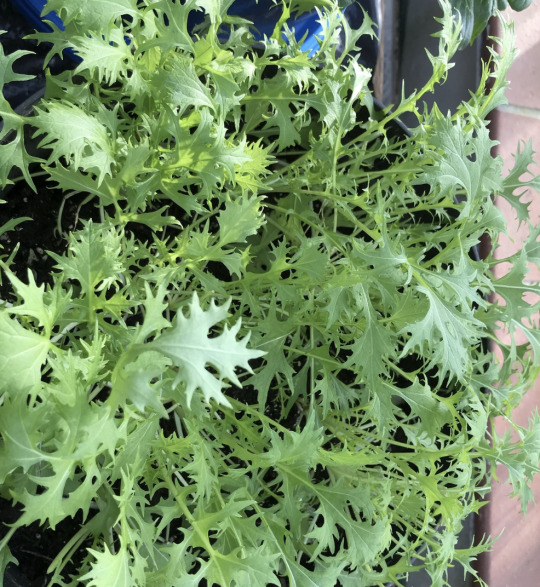
Did you know that certain types of salad plants can be grown year round here in southern England? This is our "leaf table" in the ye olde greenehouse, which supports a variety of fresh tasty salad plants during the winter. By keeping the plants in a greenhouse, they are protected from frost and intense rains. The green "curtains" in the corner are agricultural cloth blankets we place over the pots on the coldest nights. The south-facing side of the greenhouse receives maximum light and warmth on short winter days, helping the plants maintain a slow but steady growth rate. Unfortunately, due to the short day lengths and low temperatures, the plants grow much slower than in the spring and summer so we must harvest them conservatively.
Some garden plant species I recommend for winter salad cultivation are shown in the photos following the main view of the table.
Tat Soi (Brassica rapa var. rosularis) and Pak Choi (Brassica rapa subsp. chinensis). The Tat Soi are the dark green plants with rounded leaves and the Pak Choi are the plants with oval pale green leaves. Both of these East Asian traditional cabbage varieties can be allowed to mature into large plants or picked regularly to keep them small.
Komatsuna (Brassica rapa var. perviridis). This petite cabbage variety comes from Japan and has a crunchy texture.
Mizuna ( Brassica rapa var. niposinica). I was surprised that the spiky Mizuna is the same species as the other leaves. Unlike the mellow leaves, it has a spicy arugula-like flavour. I recently learned that Mizuna is among the plants astronauts have grown on the International Space Station!
Our final plant is NOT a Brassica rapa! This plant is called Miner's Lettuce (Claytonia perfoliata). This dainty plant comes from mountain and coastal regions of North America and Central America, and is named because gold miners in California ate this plant to prevent scurvy, a vitamin C deficiency disease.
#katia plant scientist#botany#plant biology#plants#plant science#greenhouse#gardens#gardening#grow your own food#grow your own#lettuce#mizuna#tat soi#bok choy#asian greens#leafy greens#salad#winter#winter garden#green academia#potted plants#indoor garden#indoor farming#healthy eating
14 notes
·
View notes
Text

15 notes
·
View notes
Text

🌱 Seedsman's latest drop of in-house strains features five new autoflowering seed varieties:
Fatso GMO F1 Auto
Garlic Muffin F1 Auto
Cookie Apple OG F1 Auto
Sour Diesel Auto
Pineapple OG Auto
🪴Get all the details here: https://www.seedsman.com/us-en/blog/seedsman-presents-new-autoflowering-strains-2024
#cannabis#marijuana#weed#seedsman#autoflower#autoflowering seeds#autoflowering#strain#strains#ganja#sativa#indica#weed strains#cannabis strains#thc#cbd#stoners#cannabis culture#high times#genetics#weed seeds#marijuana seeds#cannabis seeds#grow your own#gyo#stoner#microgrowery#autoflowers
6 notes
·
View notes
Text
No 1
#cannabis#cannablr#girls who smoke weed#weedlife#cannalife#weed community#weed strains#smoke weed everyday#greenthumb#cannacommunity#420buds#420stoner#420weed#420culture#420daily#420life#grow your own#cannabis growth#cannabis strains
7 notes
·
View notes
Text

EcoSnippets
#fungi#growing fungi#grow your own#fantastic fungi#mycology#mushrooms#fungus#colorful fungi#mushroom info graphic
143 notes
·
View notes
Text
Some seed companies worth checking out:
- Fedco Seeds, a co-op with reasonable prices and reliable seeds
- Territorial Seed, an Oregon-based seed company, cool tools too
- Johnny's, along with the top two, one of the main companies small farms order from in my area
- Kitazawa seeds, really interesting Asian vegetable seeds
- Strictly Medicinal seeds, good variety of herbs, flowers, and veg.
- Uprising Seeds, a really small company here in Washington that focuses on heirloom & open pollinated seed varieties, with a focus on plants that can thrive in organic settings & flavor.
- Southern Exposure: focused on warm climate growing, so I've never ordered from them, but I've heard good things
523 notes
·
View notes
Text
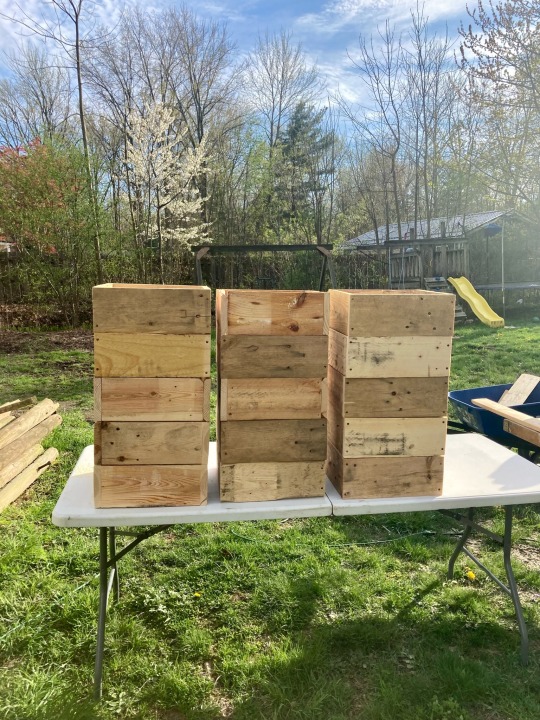
Finally got around to making my pallet potato boxes. These are 14x14 and stackable, so as the potatoes get taller I’ll add another box and bury the foliage so the potatoes produce more tubers.
Pallets are free, which I like. What makes it even better is I reused the nails I pulled out of the original pallets. I absolutely love repurposing stuff. To take an item and give it a second life as something completely different. Can’t beat it
22 notes
·
View notes
Text

Who wants a strawberry, anyone? 🍓
#strawberry#strawberries#strawbs#fruit#grow your own#plants#flowers#plant daddy#plantcore#gardencore#uk garden#english garden
15 notes
·
View notes
Text
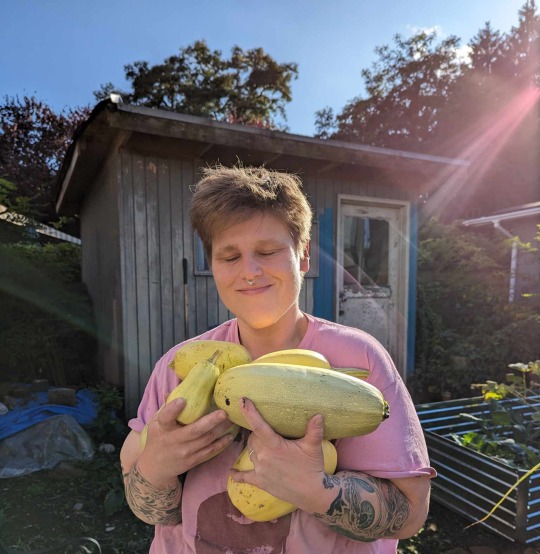
Me and my squash babies on a sunny fall day
#personal#grow your own#squash#harvest#plants#organic vegetables#gardening#backyard garden#stoner moves
9 notes
·
View notes
Text
[Video description: me discovering and trying surprise salad leaves in my greenhouse]
If you'd like to see more videos of me pottering about, check out the Rumade YouTube channel
9 notes
·
View notes
